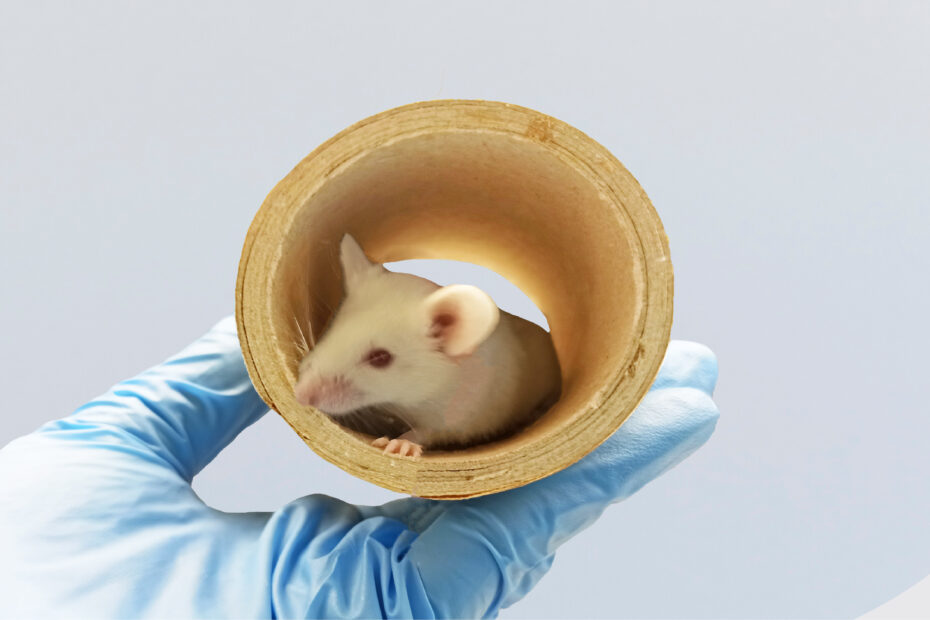The drug development process is long and expensive, taking up to 15 years and costing $1.1 billion for the average drug. Shorter timelines are crucial to reduce spending, helping you get your life-changing products to market faster. But drug development timelines are actually growing, partly due to the complexity of drugs that are currently in development, such as cell and gene therapies. So, what can be done?
Accurate preclinical models play a vital role in achieving shorter timelines by providing more relevant results, ensuring that the most promising drug candidates are progressed with compelling data — significantly reducing the need for additional studies. What’s more, preclinical mouse models allow for better planification of meaningful clinical endpoints.
Choosing the right in vivo preclinical model, however, is the key to drug development success. Many mouse models used in preclinical research are irrelevant to human diseases and lack predictive value for designing human clinical trials. What’s more, differences in factors such as the immune system and liver between animals and humans can significantly influence the pathology of a disease, which must be accurately represented by the preclinical model.
Investing in the wrong preclinical candidate with irrelevant data can lead to costly mistakes and significant delays. This blog dives deeper into the two main factors of choosing the right preclinical model: the human relevance of the mouse models, and faster lead times with the most promising preclinical candidate.
Less relevant mouse models hinder results
Murine physiology is significantly different from humans, resulting in preclinical results which may not translate well to clinical trials. However, not all mouse models are equal. Mice can be engineered to be more physiologically relevant, from expressing a certain gene of human origin all the way to recapitulating human physiology.
Choosing the wrong mouse model in preclinical drug development leads to lower quality results. A less relevant mouse model, for example one with a humanization level lower than 25%, will not provide the detailed insight needed into human physiology. This means that further studies may be required to prove the efficacy of drug candidates, extending timelines and increasing the risk of losing investment or competitive advantage.
While there are several mouse models available, we have chosen to briefly describe three preclinical models popular with researchers:
- Humanized mice are engineered to recapitulate the presence of a target. However, they do not provide insight into the human immune system (HIS), which plays a role in many pathologies.
- PMBC-engrafted mice have a large number of human immune cells, but they are subject to graft versus host disease (GvHD) which leads to lower animal welfare.
- CD34+ HIS mice have a fully functional human immune system and are ideal for research into immuno-oncology, inflammation, and infectious diseases that are specific to humans. These mice provide a more accurate prediction of clinical responses to factors that trigger an immune response, are stable for the animal’s lifetime and do not experience GvHD reactions.
Investigating new treatments in a mouse with a fully functional HIS leads to deeper understanding of their effect in the human body, which allows the progression of the most promising drug candidates and quicker elimination of those that are likely to fail.
Long lead times draw out timelines
While the mouse model selected can significantly shorten drug development timelines, the availability of preclinical mouse models plays a crucial role, too. It is critical to find an appropriate supplier that offers ready-to-use mice, as humanized mice take 14 weeks to generate. Any delay in lead times causes difficulties in planning studies and limits your flexibility, making it challenging to respond dynamically to any findings. What’s more, suppliers may struggle to provide large numbers of animals or single donor-derived cohorts at short notice, further limiting what studies you can perform.
Look for a supplier who is able to continuously produce CD34+ HIS mice ready to order. With a reduced delivery time, you can start your experiments and generate data more rapidly, thereby providing timely information to investors. Ready-to-order mice also grant access to larger cohort studies, giving you deeper understanding from your experiments. And finally, ready-to-order mice increase study flexibility, facilitating data-driven decisions.
The right preclinical model accelerates drug development
The race to bring new treatments to market is lengthy and challenging. Using the right preclinical mouse model is crucial to obtaining higher quality results and shortening timelines. CD34+ HIS mice provide the most relevant and human-specific model for oncological studies, empowering you to make informed decisions and advance the most promising drug candidates. And by working with a supplier that offers ready-to-order mice, you have the ultimate flexibility in your studies, reducing development costs and getting your product to market faster.
Interested in learning more? Contact the TransCure bioServices team today to find out about their industry-trusted range of HIS mouse models.

